
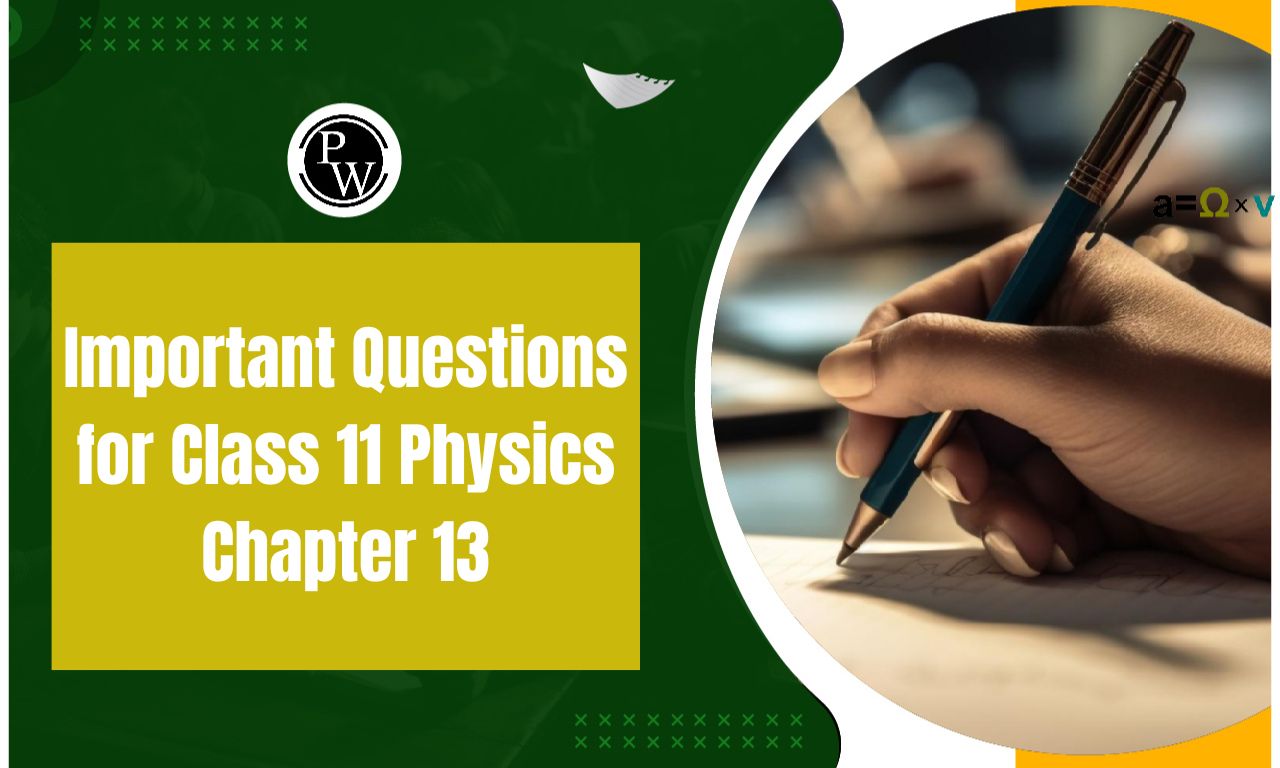
Important Questions for Class 11 Physics Chapter 13: Chapter 13 of Class 11 Physics, titled "Oscillations," introduces the concept of periodic motion, focusing on simple harmonic motion (SHM). Key topics include the conditions for SHM, displacement, velocity, and acceleration equations in SHM, along with concepts like amplitude, frequency, period, and phase. The chapter also explores the energy in oscillations, including potential and kinetic energy, and the concept of simple pendulums and springs in oscillatory motion.
Important formulas such as the angular frequency and the time period of a simple pendulum and mass-spring system are essential. Understanding damping and resonance is also covered, providing a comprehensive overview of oscillatory systems.Important Questions for Class 11 Physics Chapter 13 Overview
Important Questions for Class 11 Physics Chapter 13 PDF
In this section, we have compiled important questions from Class 11 Physics Chapter 13, "Oscillations," to help you understand key concepts like simple harmonic motion, energy in oscillations, and the behavior of oscillatory systems. These questions are designed to reinforce your understanding and help you prepare effectively for exams. Below, we have provided a PDF with these questions for easy reference and practice.Important Questions for Class 11 Physics Chapter 13 PDF
Important Questions for Class 11 Physics Chapter 13 Oscillations
Below is the Important Questions for Class 11 Physics Chapter 13 Oscillations -1. The girl sitting on a swing stands up. What will be the effect on periodic time of swing?
Ans: The time period T is directly proportional to the square root of effective length of pendulum (l). If the girl stands up, the effective length of swing (i.e., pendulum) decreases, thus the time period (T) also decreases.
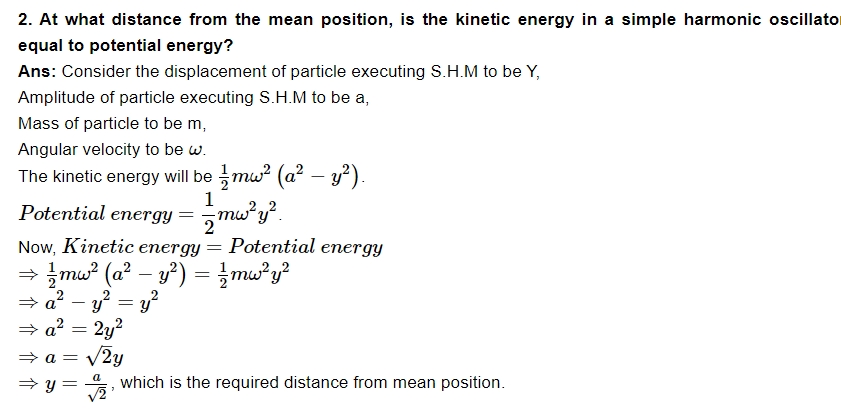
3. The soldiers marching on a suspended bridge are advised to go out of steps. Why?
Ans: When the soldiers are marching on a suspended bridge, they are advised to go out of steps. This is because in this case the frequency of marching steps matches with the natural frequency of the suspended bridge. This results in resonance. Thus, amplitude of oscillation increases extensively which may lead to the collapsing of bridges.

6. Give some practical examples of S. H. M?
Ans: Some practical examples of S. H. M. are as follows:
-
Motion of piston in a gas – filled cylinder.
-
Atoms vibrating in a crystal lattice.
-
Motion of helical spring.
7. What is the relation between uniform circular motion and S.H.M?
Ans: Uniform circular motion can be treated as two simple harmonic motions operating at right angles to each other.
8. What is the minimum condition for a system to execute S.H.M?
Ans: The minimum condition for a body to execute S.H.M to have elasticity and inertia.
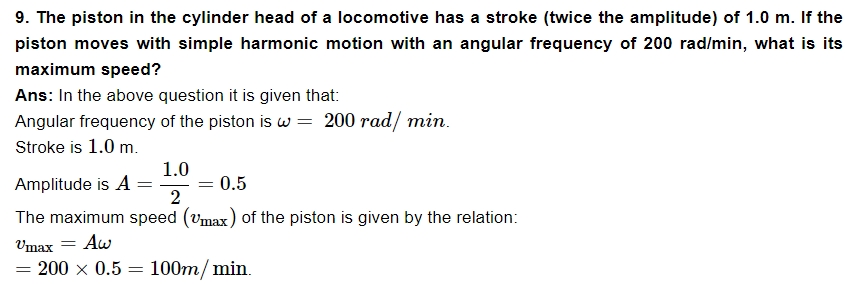
2 Marks Questions
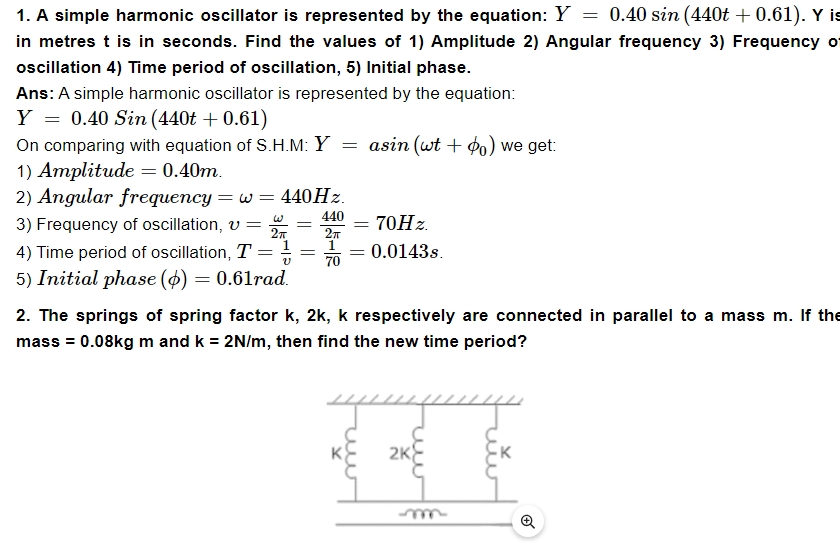
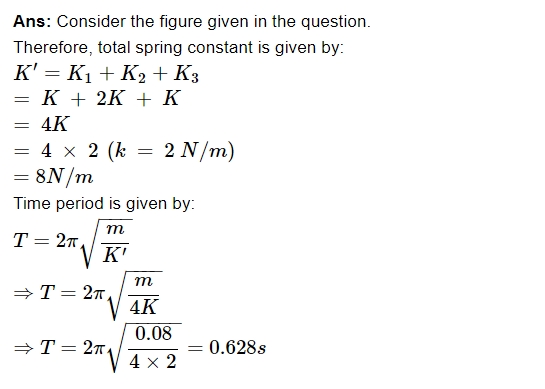
3. The bob of a vibrating simple pendulum is made of ice. How will the period of swing will change when the ice starts melting?
Ans: The period of swing of simple pendulum will remain unchanged till the location of centre of gravity of the bob left after melting of the ice remains at the fixed position from the point of suspension. When centre of gravity of ice bob after melting is shifted upwards, the effective length of pendulum decreases and thus the time period of swing decreases. Similarly, if centre of gravity shifts downward, time period increases.
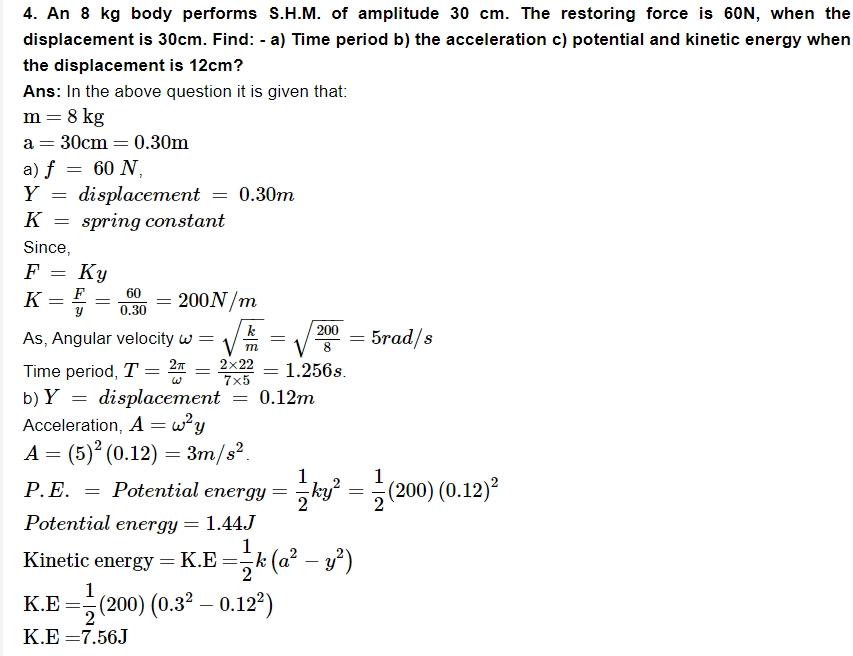
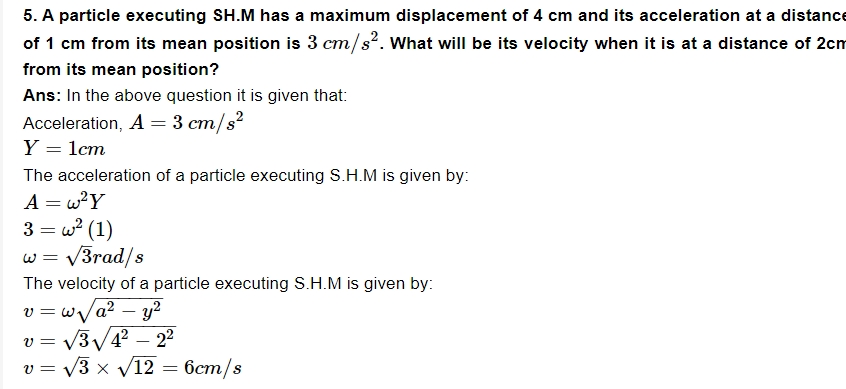
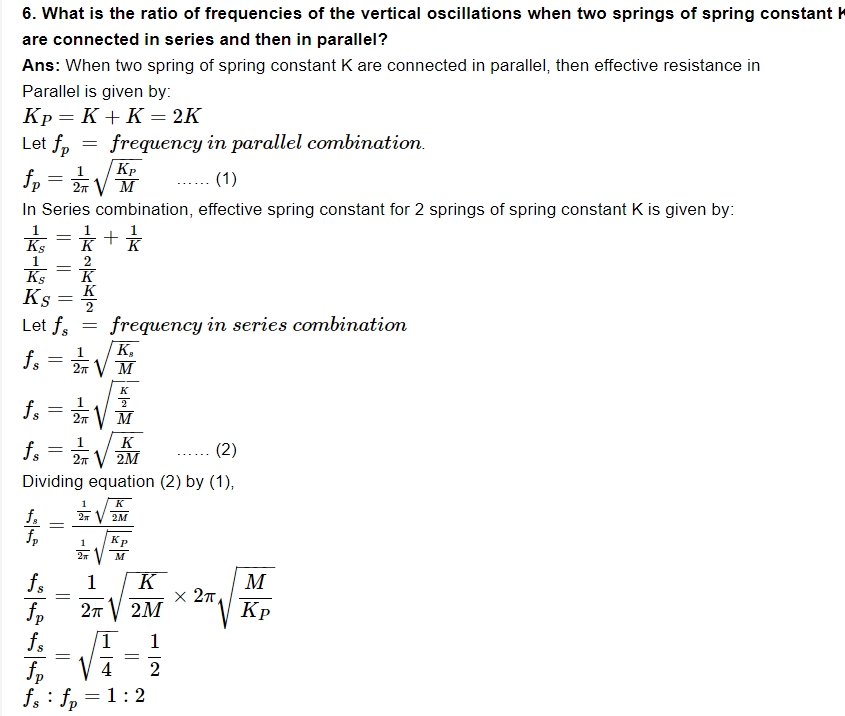
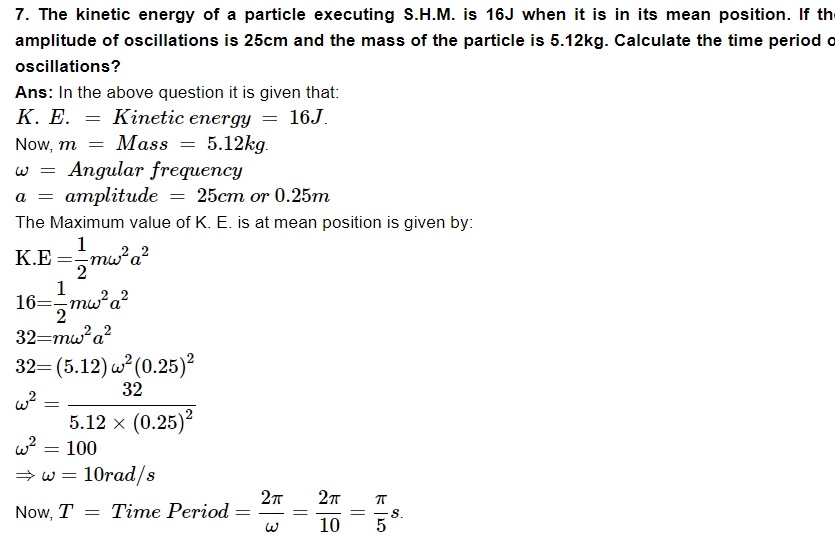
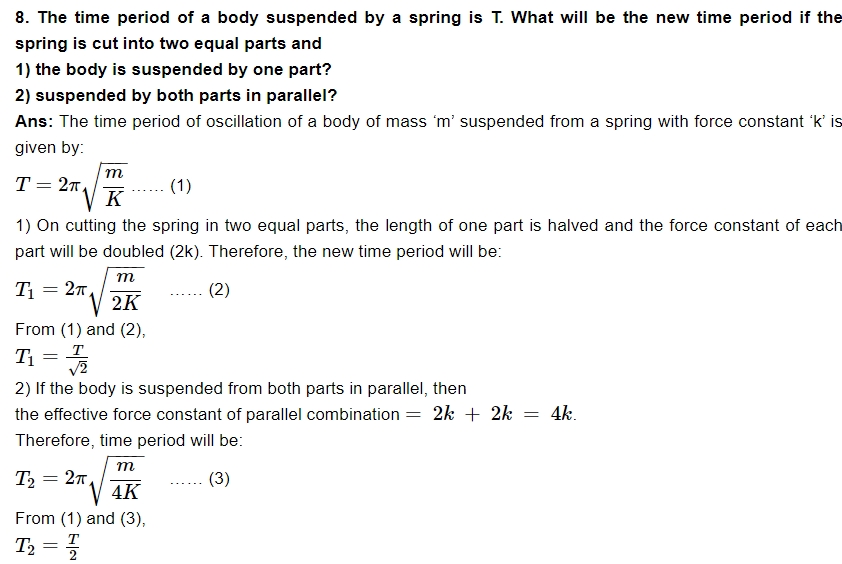
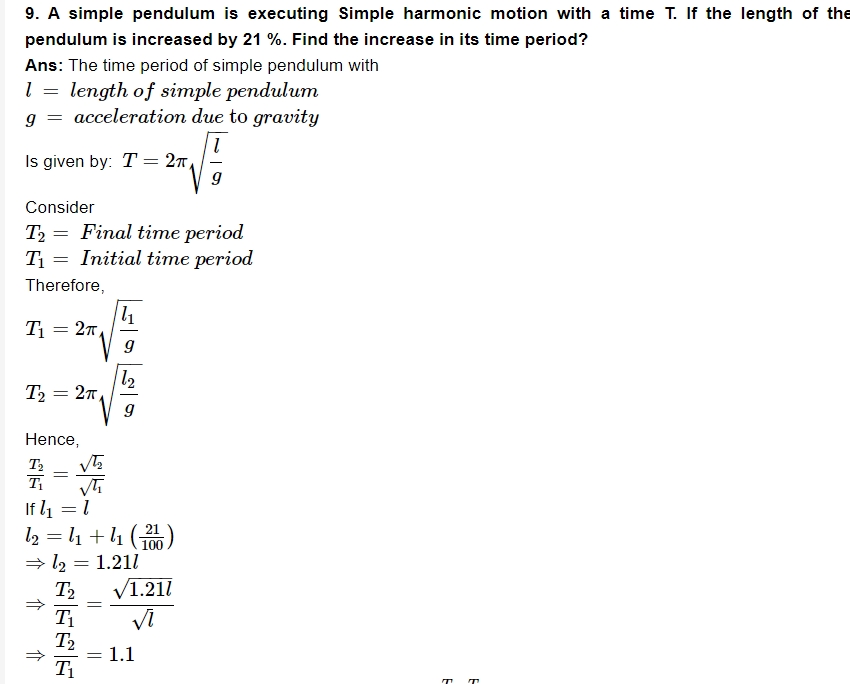
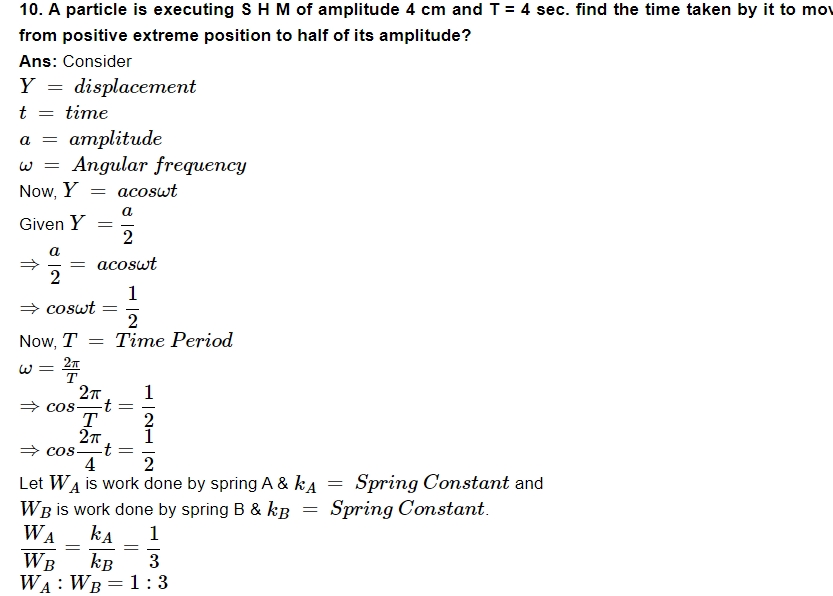
3 Marks Questions
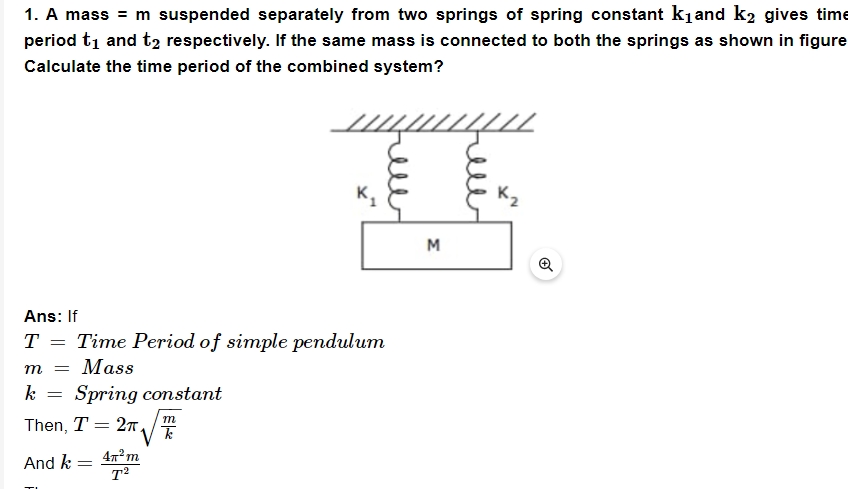
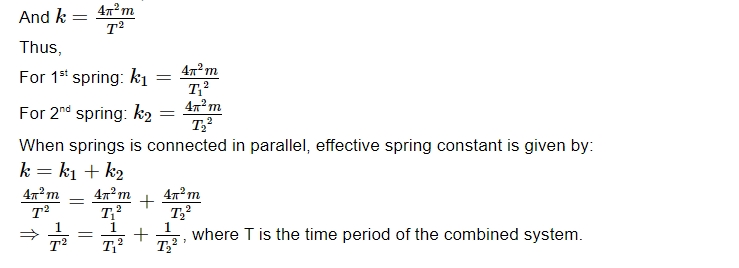
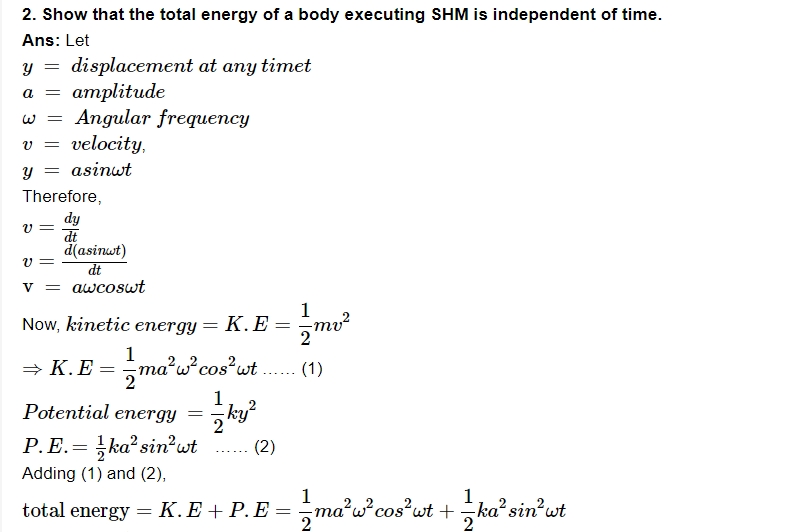
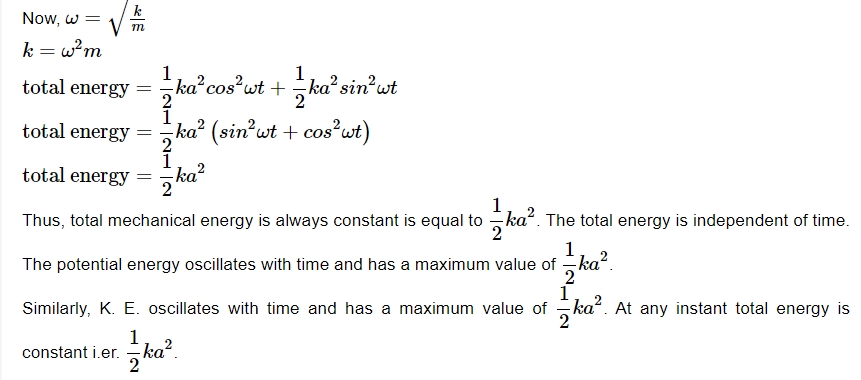
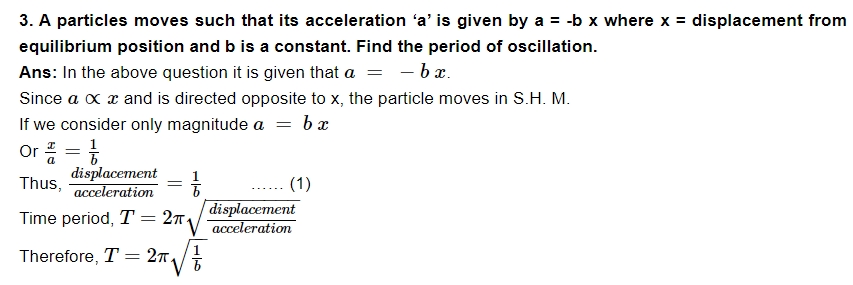

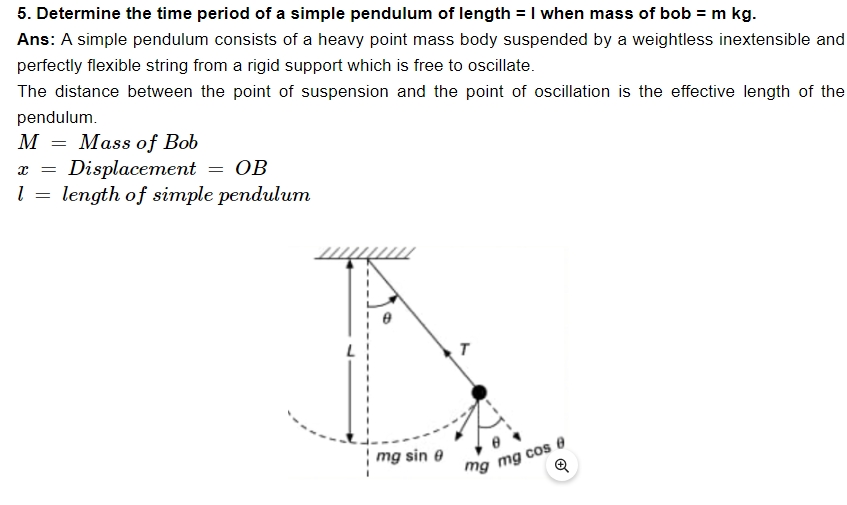
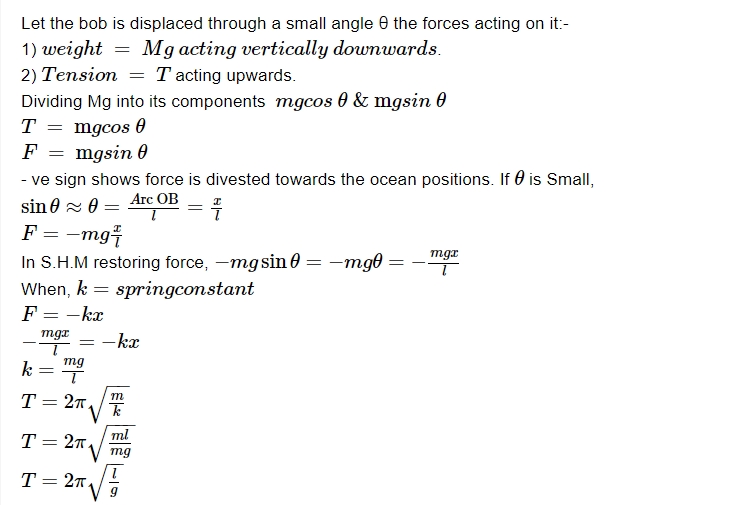
6. Which of the following examples represent periodic motion?
a) A swimmer completing one (return) trip from one bank of a river to the other and back.
Ans: As motion of the swimmer between the banks of the river is to and fro, it does not have a definite period. The time taken by the swimmer during his back-and-forth journey may not be the same. Hence, the swimmer's motion is not periodic.
b) A freely suspended bar magnet displaced from its N-S direction and released.
Ans: If a magnet is displaced from its N-S direction and released, then the motion of the freely-suspended magnet is periodic. This is because the magnet oscillates about its position with a definite period of time.
c) A hydrogen molecule rotating about its centre of mass.
Ans: If we consider a hydrogen molecule rotating about its centre of mass, it is observed that it comes to the same position after an equal interval of time. This type of motion is periodic motion.
d) An arrow released from a bow.
Ans: When an arrow is released from a bow, it moves only in the forward direction. There is no motion repeated in equal intervals of time. Therefore, this motion is not periodic.
7. Which of the following examples represent (nearly) simple harmonic motion and which represent periodic but not simple harmonic motion?
a) The rotation of earth about its axis.
Ans: When the earth rotates about its axis, it comes to the same position in fixed intervals of time. Hence, it is a periodic motion. However, earth does not have a to and fro motion about its axis. Hence, it is not a simple harmonic.
b) Motion of an oscillating mercury column in a U-tube.
Ans: In an oscillating mercury column in a U-tube, mercury moves to and from on the same path, about the fixed position, with a certain period of time. Hence, it is a simple harmonic motion.
c) Motion of a ball bearing inside a smooth curved bowl, when released from a point slightly above the lowermost point.
Ans: When a ball is released from a point slightly above the lowermost point, it moves to and from about the lowermost point of the bowl. Also, the ball comes back to its initial position in the fixed interval of time, again and again. Thus, this motion is periodic as well as simple harmonic.
d) General vibrations of a polyatomic molecule about its equilibrium position.
Ans: A polyatomic molecule possesses many natural frequencies of oscillation. Its vibration is the superposition of individual simple harmonic motions of a number of different molecules. Thus, it is not simple harmonic, but periodic.
Benefits of Using Important Questions for Class 11 Physics Chapter 13
Important Questions for Class 11 Physics Chapter 13 FAQs
What is the basic concept of oscillation?
What is oscillation used for?
What is the natural period of oscillation?
What are the three types of oscillations?












